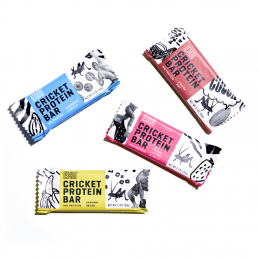Cricket flour is high in protein and micronutrients including iron and calcium, while requiring 20 times fewer natural resources than beef per gram of protein.
Exo makes energy bars with cricket flour, using recipes developed by a triple Michelin-starred chef. The bars are high in protein, low in sugar and nutritionally dense. Insects, such as crickets, are easy to farm, as they reproduce quickly and require very little feed, water and space compared to conventional livestock.

The crickets are 69% protein by dry weight compared with 31% for chicken breast and 29% for sirloin steak, according to Exo. Moreover, crickets produce around 1% of the methane that cattle do, and consume a sixth of their feed without requiring acres of grassland to graze on.
Sustainable, healthy and delicious — eating insects simply makes sense. Convincing people to act on that logic, and overcome the psychological hurdle, is the real challenge though.
Gabi Lewis – CEO, Exo.
Why you should care
The fifth assessment report from IPCC concludes that global warming could reduce agricultural production by as much as two percent each decade for the rest of this century. It is also expected that food production will need to double by 2050 to feed the growing population, expected to hit 9 billion by 2050. With this in mind, insect protein represents an efficient alternative to current practices, with the ability to lower greenhouse gas emissions, feed and water use.
How the Global Goals are addressed

Good Health and Well-Being
Cricket flour has some impressive nutritional benefits: more than twice the iron levels of spinach, and greater protein to fat ratios than beef and chicken.

Responsible Consumption and Production
Switching consumption to insect-derived proteins requires shifts of perceptions. Exo leads the way by presenting customers with attractive, tasty and sustainable alternatives.

Climate Action
Agriculture is responsible for an estimated 1/3 of global greenhouse gas emissions. Crickets emit 100 times less GHG than cows and require a fraction of land and water.


